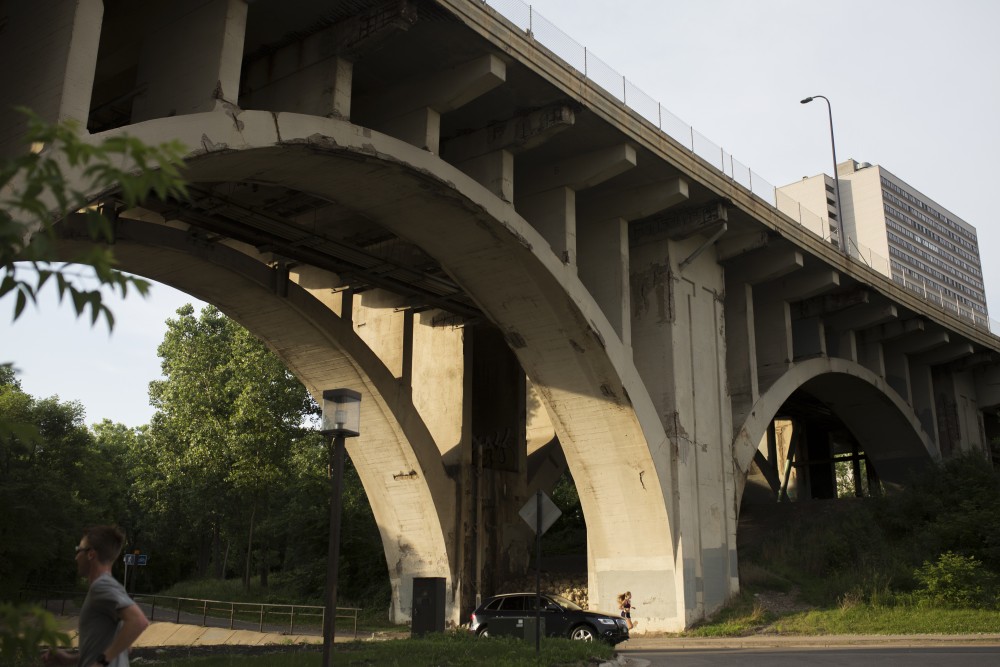Two University-area bridges are facing structural deterioration, resulting in changes that will affect campus commuting and navigation.
The 10th Avenue Bridge is experiencing deterioration of its concrete, but will remain open while the design work for a rehabilitation project is underway through the end of the year. The University suspension pedestrian bridge near Wilkins Hall was closed earlier in the month due to structural deterioration, but it remains unclear if a replacement is feasible.
The rehabilitation project for the 10th Avenue Bridge will begin with an open house put on by the City of Minneapolis on Tuesday to allow for public comments on the future of the thoroughfare.
Plans for the bridge include restoration of the arch in the middle section, including a full deck replacement and the addition of a protected bike lane, said Meseret Wolana, project manager with the City of Minneapolis.

The protected bike lane is consistent with the standards set forth by the University’s Protected Bikeway project, which will improve 2.6 miles of protected bikeways in the University area starting in 2019.
The bridge was constructed in 1929 and was added to the National Register of Historic Places in 1989. When it was erected, it was one of the longest bridges spanning the Mississippi in the region, Wolana said.
The most recent structural rehabilitation to the 10th Avenue Bridge was in 1970, but the Minnesota Department of Transportation has sought funding since 2009.
The University suspension pedestrian bridge, or the “Big M,” was closed earlier this month following an inspection in May. The inspection deemed the bridge unsafe due to structural deficiencies that are not currently cost effective to repair.
“During that regular inspection, we found structural deficiencies,” said Lacey Nygard, a University spokesperson. “After looking at that report and seeing that there’s a limited amount of life on the bridge and having concerns about the safety of the campus community, the University decided to close [it].”
Accelerating deterioration prompted the University to inspect the bridge annually, rather than the typical bi-annual inspection received by other bridges on campus.
“We knew [about the deterioration], and actually we started a process in March this year to look at a preliminary design for a possible new bridge,” said Sandy Cullen, assistant director of facilities and transportation systems at the University.
The pedestrian bridge was originally erected in 1949 before it was modified and moved to its current location between Wilkins Hall and the Knoll area of campus in 1996.
The planned alternate route for pedestrians is on the East River Road and University Avenue sidewalks, which is approximately 97 feet of added distance, Nygard said.
The bridge will remain closed until it is removed, which is expected to happen in 2019.













